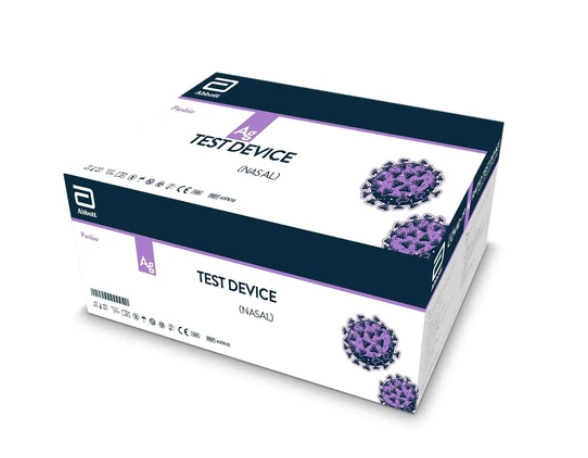Anti-MOUSE CD24 CLUSTERED ANTIBODIES

Rat anti mouse CD24 (Heat Stable Antigen), monoclonal
Catalog: RDI-mCD24-M1/69
Package Size: 0.1mg in 0.2ml (0.5mg/ml) 10mM phopshate buffer pH7.2 with 150mM NaCl and 0.09% sodium azide.
Supplied: purified rat monoclonal
Clone: M1/69
Ig Isotype: rat IgG2b
Reactivity: The M1/69 antibody reacts with CD24(Heat-Stable Antigen, HSA or HsAg), a variably glycosylated membrane protein found on erythrocytes, granulocytes, monocytes, and lymphocytes.(1,2,3) Levels of expression of CD24 vary during differentiation of the T and B cell lineages. In the bone marrow, hematopoietic progenitors acquire CD24 expression upon commitment to the B-lymphocyte lineage(4). Immature B cells in the bone marrow and spleen of adult mice express high levels of CD24, whereas mature peripheral B lymphocytes express intermediate levels of CD24. (5,6) The level of CD24 expression has been reported to rise upon activation of splenic B cells with LPS, but not with CD154 (CD40 Ligand).7 The majority of thymocytes express high levels of CD24, while mature thymic and peripheral T cells do not express CD24.(8). In contrast, Gd TCR-bearing thymocytes which emigrate to the spleen are CD24 + (9) Dendritic cells of the thymus and spleen have also been reported to express CD24, as determined by staining with M1/69 mAb.10,11 CD24 is involved in the costimulation of CD4 + T cells by B cells,(7) it is a co-inducer of in vitro thymocyte maturation,12 and it is a ligand of CD62P (P-selectin).(13) While the monoclonal antibodies 30-F1, M1/69, and J11d all react with CD24, they show subtle differences in the level of staining of different lymphocyte populations.(6) When possible, investigators should continue to use the same monoclonal antibody as used in previous studies.
Uses: -immunofluorescent staining (1 µg/million cells) with flow cytometric analysis
-immunohistochemical staining of citrate-pretreated formalin-fixed paraffin-embedded sections (0.5 - 2.5 µg/ml)
-western blot analysis,
-in vitro induction (plate-bound in the presence of anti-TCR chain mAb H57-597, of thymocyte maturation,12 complement-mediated cytotoxicity,(14)
-immunohistochemical staining of acetone-fixed frozen and zinc-fixed paraffin-embedded sections.
Storage: Store at 4 Deg C.
Rat anti mouse CD24 (Heat Stable Antigen), monoclonal
Catalog#: RDI-mCD24-J11d
Package Size: 0.5mg purified ab in Tris Hcl
Supplied: purified rat monoclonal
Clone: J11D
Ig Isotype: rat IgM
Reactivity: Reacts with the heat stable antigen (HSA) found on erythrocytes, granulocytes, monocytes, and lymphocytes. There are variable levels of expression of HSA, possibly developmentally regulated among subsets of B cells. The majority of thymocytes express hgh levels of HSA, while mature hymic and peripheral T cells do not express HSA. In Vitro treatment with J11d antibody plus complement reduces primary IgM responses and proliferative responses to LPS.
Uses: -indirect flow cytometry
-complement mediated depletion
-western blot
-histochemistry (acetone fixed frozen sections)
ref: -Eur J. Immunol 20:1597-1602
-J. immunol 127:2496-2501
Storage: Store at 4 Deg C.
Precautions: For In vitro research Use Only. Not for use in or on humans or animals or for diagnostics. Sodium azide may form explosive compounds in presence of heavy metals or under acidic conditions. Flush drains with copious amounts of water to prevent buildup of explosive compounds.
Rat anti mouse CD24 (Heat Stable Antigen), monoclonal
Catalog#: RDI-mCD24-30F1
Package Size: 0.1mg purified ab
Supplied: purified rat monoclonal
Clone: 30-F1
Ig Isotype: rat IgG2c
Reactivity: Reacts with the heat stable antigen (HSA) found on erythrocytes, granulocytes, monocytes, and lymphocytes. There are variable levels of expression of HSA, possibly developmentally regulated among subsets of B cells. The majority of thymocytes express high levels of HSA, while mature thymic and peripheral T cells do not express HSA. Different staining patterns may be observed when using clones J11d, 30-F1 and M1/69). Clone 30F1 has been used in conjunction with anti-CD45R (clone B220), and anti-CD43 (clone S7) to identify defined stages of pro- and pre-B cell development.
Uses: -indirect flow cytometry
-histochemistry (acetone fixed frozen sections)
ref: -Stall, Am and SM Wells, 1997. Facs analysis of murine B-cell populations in Weir's Handbook of Experimental Immunology, fifth edition, Blackwell Science Publishers pp 63.1-63.17
-J Exp Med 173:1213-1225
-J Exp Med 178:951-960
Storage: Store at 4 Deg C.
Precautions: For In vitro research Use Only. Not for use in or on humans or animals or for diagnostics. Sodium azide may form explosive compounds in presence of heavy metals or under acidic conditions. Flush drains with copious amounts of water to prevent buildup of explosive compounds.
